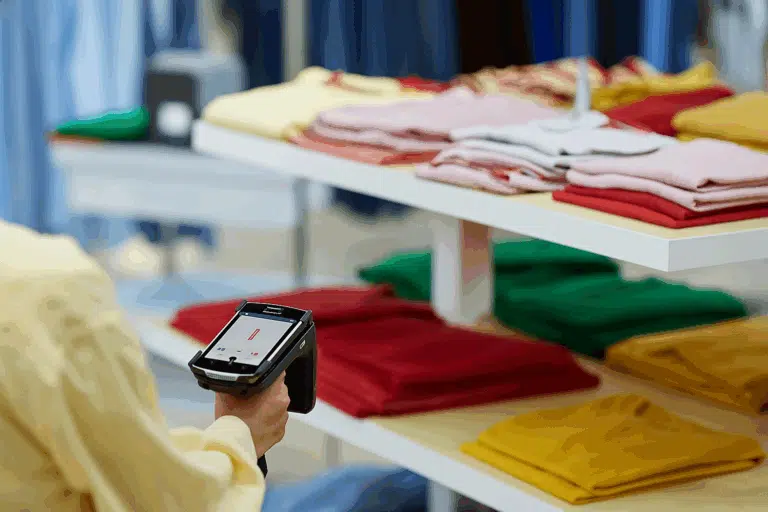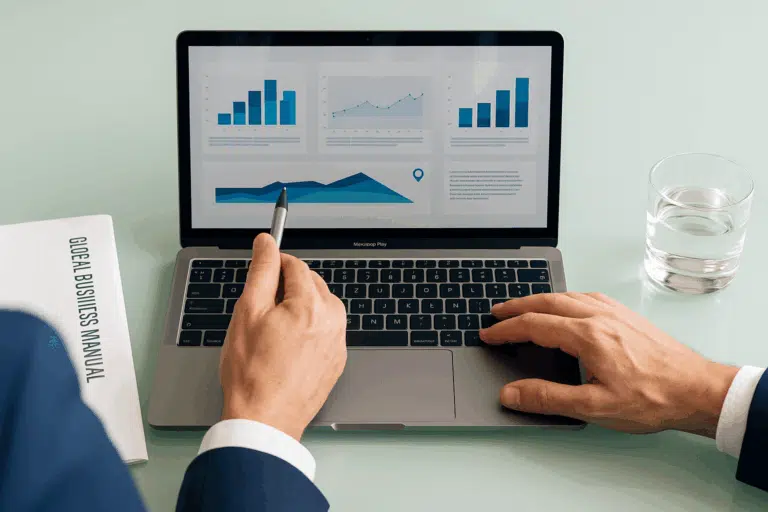“Depreciate Fixed Assets: Step-by-Step Guide to Business Success” offers a comprehensive and practical roadmap for organizations seeking to optimize their financial performance through effective fixed asset depreciation strategies.
Depreciation is a critical accounting process that allocates the cost of tangible assets over their useful lives, impacting financial statements, tax liabilities, and overall profitability. In this guide, businesses will gain valuable insights into the various methods of depreciation, such as straight-line, declining balance, and units-of-production, and how to select the most appropriate approach for their specific assets.
Through clear step-by-step instructions, real-world examples, and best practices, this guide equips enterprises with the knowledge and tools to make informed decisions, maximize asset utilization, comply with accounting standards, and ultimately achieve long-term success.
Table of Contents
ToggleKey Takeaways
- Understanding Depreciation: Depreciation is a crucial concept in business finance, representing the reduction in value of a fixed asset over its useful life.
- Identifying Assets to Depreciate: Not all assets are subject to depreciation. It’s important to identify which fixed assets in your business should be depreciated.
- Choosing the Right Method: There are several methods of depreciation, including straight-line, declining balance, and units of production. The choice of method can significantly impact your depreciation calculations.
- Calculating Depreciation: Understanding how to calculate depreciation accurately is key to maintaining your business’s financial health.
- Recording and Tracking: Regular and accurate recording and tracking of depreciation is essential for both internal financial management and external financial reporting.
- Impact on Business Valuation: Depreciation can significantly impact a business’s valuation, affecting both the perceived value of assets and the overall worth of the business.
- Tax Implications: Depreciation can have significant tax implications, potentially offering tax deductions that can benefit your business.
Understanding Depreciation and Fixed Assets
What are Fixed Assets?
Fixed assets, also known as tangible assets or property, plant, and equipment (PP&E), are long-term assets held by a company for productive use in its operations and not intended for sale.
These assets have physical substance and typically provide economic benefits to the business for more than one accounting period. Examples of fixed assets include buildings, machinery, vehicles, furniture, and land. Fixed assets are a vital component of a company’s infrastructure and play a crucial role in generating revenue and supporting its core operations.
The Concept of Depreciation
Depreciation is an accounting concept used to allocate the cost of fixed assets over their estimated useful lives. It represents the systematic recognition of an asset’s wear and tear, obsolescence, or diminution in value over time. Since fixed assets are not meant to be expensed entirely in the period of acquisition, depreciation spreads their cost over several accounting periods.
This process allows businesses to match the cost of using these assets to the revenue they generate, adhering to the matching principle in accounting. Depreciation is recorded as an expense in the income statement, reducing the asset’s carrying value on the balance sheet gradually until it reaches its estimated salvage or residual value.
Why Depreciate Fixed Assets?
Depreciating fixed assets serves several critical purposes for businesses.
- Firstly, it accurately reflects the true cost of using these assets over their useful lives, aligning with the matching principle and providing a more accurate representation of the company’s financial performance.
- Secondly, depreciation helps in determining the appropriate value of fixed assets on the balance sheet, which impacts the company’s financial ratios and overall financial health.
- Thirdly, by spreading the cost of assets over time, depreciation helps businesses manage their tax liabilities more effectively, as tax authorities often allow deductions for depreciation expenses.
- Lastly, proper depreciation accounting ensures compliance with accounting standards and regulations, enhancing transparency and credibility in financial reporting.
Step-by-Step Guide to Depreciating Fixed Assets
Step 1 – Identifying Fixed Assets to Depreciate
The first step in the process of depreciating fixed assets is to identify the assets that are subject to depreciation. This involves reviewing the company’s list of tangible assets, such as buildings, equipment, machinery, and vehicles, to determine which ones qualify for depreciation.
Only long-term assets with a limited useful life are eligible for depreciation. Land, for example, is typically excluded from depreciation as it is considered to have an indefinite useful life. Properly identifying fixed assets for depreciation ensures that only relevant assets are accounted for in the depreciation calculations, leading to accurate financial reporting.
Step 2 – Choosing the Right Depreciation Method
Once the fixed assets subject to depreciation have been identified, the next step is to choose the most appropriate depreciation method.
There are several commonly used depreciation methods, including straight-line, declining balance, and units-of-production. Each method has its own advantages and considerations, and the choice of method depends on factors such as the asset’s expected pattern of use, useful life, and regulatory requirements.
The straight-line method spreads the asset’s cost evenly over its useful life, while the declining balance method front-loads the depreciation expense, and the units-of-production method bases depreciation on the asset’s usage or output. Selecting the right depreciation method is essential for accurately reflecting the asset’s wear and tear or obsolescence over time.
Step 3 – Calculating Depreciation
After selecting the appropriate depreciation method, the next step is to calculate the depreciation expense for each accounting period. The calculation involves dividing the cost of the fixed asset (or its depreciable base, which may exclude salvage value) by the estimated useful life or the expected output, depending on the chosen depreciation method.
The resulting depreciation expense is then recorded in the company’s income statement, spreading the cost of the fixed asset over the periods it contributes to generating revenue. Companies must ensure accurate calculations to adhere to accounting standards and present a true and fair view of their financial performance.
Step 4 – Recording and Tracking Depreciation
The final step in the process of depreciating fixed assets is to record and track the depreciation expense over time. Depreciation is recorded as an operating expense in the income statement and reduces the carrying value of the fixed asset on the balance sheet.
Companies must maintain detailed records of each fixed asset’s cost, useful life, and depreciation calculations to support financial statements and comply with auditing requirements. Additionally, depreciation schedules should be regularly updated to reflect any changes in the useful life or disposal of fixed assets.
Effective recording and tracking of depreciation ensure accurate financial reporting and enable businesses to make informed decisions regarding asset management and replacement.
The Impact of Depreciation on Business Valuation
Depreciation and Asset Value
Depreciation has a significant impact on the value of fixed assets over time. As fixed assets age and are subject to wear and tear or obsolescence, their carrying value on the balance sheet is gradually reduced through the depreciation process. The depreciation expense recognized in the income statement reflects the gradual consumption of the asset’s economic benefits, leading to a decrease in its net book value.
Consequently, the asset’s value is reduced to reflect its diminished capacity to generate future cash flows. This decrease in asset value over time is crucial for accurate financial reporting and aligning the asset’s cost with the revenue it helps generate throughout its useful life.
Depreciation and Business Worth
Depreciation plays a pivotal role in determining a company’s overall worth or enterprise value. As fixed assets are essential components of a company’s operations and revenue generation, their depreciation affects the company’s financial position and profitability.
A company with significant fixed assets that are nearing the end of their useful lives may experience higher depreciation expenses, which can impact its net income and operating margins. On the other hand, a company with newer fixed assets and a lower depreciation expense may report higher net income and profitability.
Investors, lenders, and stakeholders often consider depreciation expenses and asset values when evaluating a company’s financial health and assessing its potential for future growth and value creation. As such, a comprehensive understanding of depreciation’s impact on a company’s financial statements is crucial for accurately assessing its worth and making informed investment or strategic decisions.
Tax Implications of Depreciating Fixed Assets
Depreciation and Tax Deductions
Depreciation plays a vital role in tax deductions for businesses that own and use fixed assets. The IRS allows companies to claim depreciation as a deductible expense on their tax returns, providing a tax benefit that reduces their taxable income.
By recognizing the cost of fixed assets over their useful lives, businesses can spread the expense across multiple tax years rather than deducting the full asset cost in the year of purchase. This approach aligns with the economic reality of asset usage and helps businesses manage their tax liabilities more effectively. The ability to claim depreciation deductions reduces the tax burden on businesses and allows them to invest more in growth and expansion.
IRS Guidelines on Depreciation
The IRS provides specific guidelines and rules governing the depreciation of fixed assets for tax purposes. Businesses must follow these guidelines to accurately calculate and claim depreciation deductions. The IRS sets rules on the acceptable depreciation methods, useful lives of different asset categories, and conventions for asset classes.
It also specifies the requirement to use the Modified Accelerated Cost Recovery System (MACRS) for most tangible depreciable property, which includes various depreciation methods and recovery periods based on asset types. Additionally, the IRS may provide additional guidance and regulations regarding depreciation for specific industries or asset classes. It is essential for businesses to comply with IRS guidelines on depreciation to ensure proper tax reporting and to avoid potential tax-related issues or penalties.
Conclusion: Leveraging Depreciation for Business Success
In conclusion, leveraging depreciation is a powerful financial strategy that contributes significantly to a company’s success. By systematically allocating the cost of fixed assets over their useful lives, businesses can accurately reflect their true economic value and align expenses with revenue generation. Depreciation not only enhances the accuracy and transparency of financial reporting but also facilitates effective tax management by enabling businesses to claim deductions and reduce their taxable income.
Choosing the right depreciation method and accurately calculating and recording depreciation expenses are vital for optimizing financial performance and making informed business decisions. Moreover, understanding and adhering to IRS guidelines on depreciation ensures compliance with tax regulations and avoids potential issues or penalties.
As an essential aspect of financial management, depreciation empowers businesses to effectively manage their assets, enhance profitability, and pave the way for sustainable growth and long-term business success.
FAQ
Can I choose not to depreciate a fixed asset?
In general, businesses cannot choose not to depreciate a fixed asset. Depreciation is a fundamental accounting principle that aims to allocate the cost of tangible assets over their useful lives, ensuring the matching of expenses with the revenue generated by those assets.
Failing to depreciate fixed assets would lead to inaccurate financial reporting and misrepresentation of a company’s financial position. However, there are specific exceptions, such as land, which is not subject to depreciation due to its indefinite useful life. Still, most tangible fixed assets must undergo the depreciation process as per accounting standards and tax regulations.
How does depreciation affect cash flow?
Depreciation does not directly impact cash flow. It is a non-cash expense that affects the company’s income statement and reduces net income. While depreciation reduces the reported profitability, it does not involve any actual cash outflow.
However, the tax deductions resulting from depreciation can positively influence cash flow. The depreciation expense reduces taxable income, which, in turn, lowers the tax liability, resulting in higher cash flow after taxes. Thus, depreciation indirectly affects cash flow by reducing tax payments and improving the availability of cash for other business needs.
What is the difference between depreciation and amortization?
Depreciation and amortization are both methods of allocating the cost of assets over their useful lives, but they apply to different types of assets. Depreciation is used for tangible assets, such as buildings, machinery, and equipment, which have physical substance. Amortization, on the other hand, applies to intangible assets, like patents, trademarks, copyrights, and goodwill.
Both depreciation and amortization follow a similar concept of allocating the asset’s cost over time, but they adhere to different accounting principles based on the nature of the assets they pertain to.
How does the salvage value affect the depreciation of a fixed asset?
The salvage value, also known as the residual value, is the estimated value of a fixed asset at the end of its useful life. It affects the depreciation calculation by reducing the depreciable base. The depreciable base is the original cost of the asset minus the estimated salvage value.
A higher salvage value means a lower depreciable base, resulting in lower depreciation expenses over the asset’s useful life. Conversely, a lower salvage value would increase the depreciable base and lead to higher depreciation expenses. The salvage value is a crucial consideration in determining the total depreciation expense and the carrying value of the asset on the balance sheet at the end of its useful life.
What are some common mistakes businesses make when depreciating fixed assets?
Some common mistakes businesses make when depreciating fixed assets include using incorrect depreciation methods, miscalculating the depreciation expense, failing to update depreciation schedules for asset additions or disposals, or not recording depreciation in the proper accounting period.
Another mistake is inaccurately determining the useful life or salvage value of assets, which can lead to incorrect depreciation calculations. Failure to comply with IRS guidelines on depreciation can result in tax-related issues.
To avoid these mistakes, businesses should implement robust asset management systems, maintain accurate records of fixed assets, regularly review and update depreciation schedules, and seek professional advice when necessary to ensure proper depreciation accounting and compliance with accounting standards and tax regulations.



























